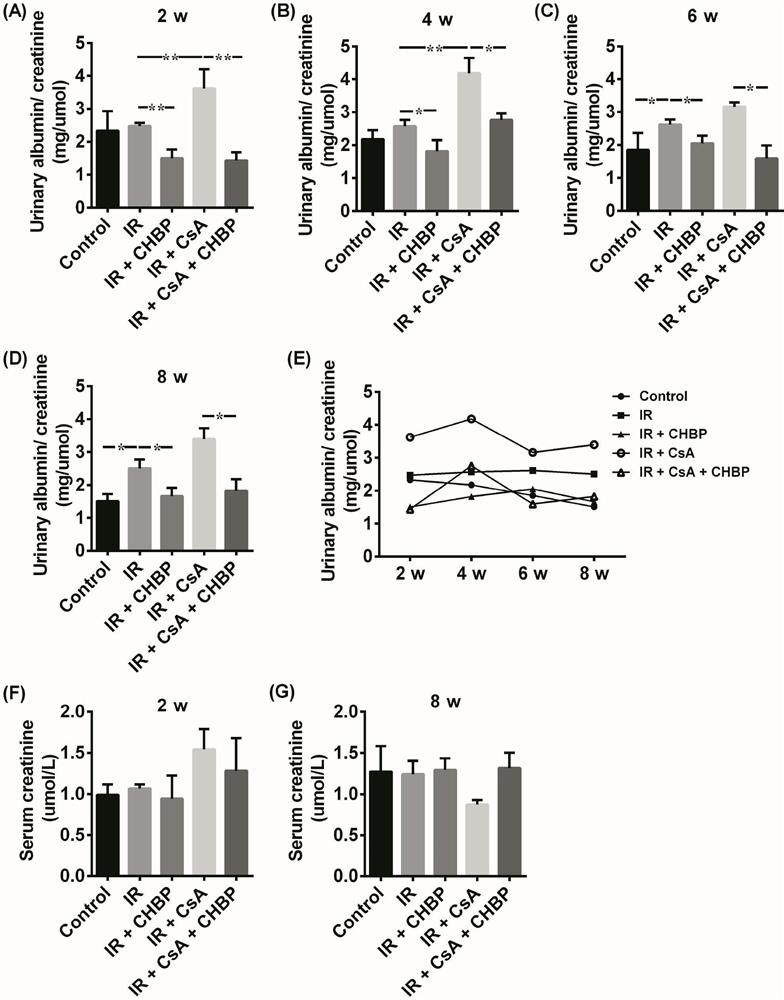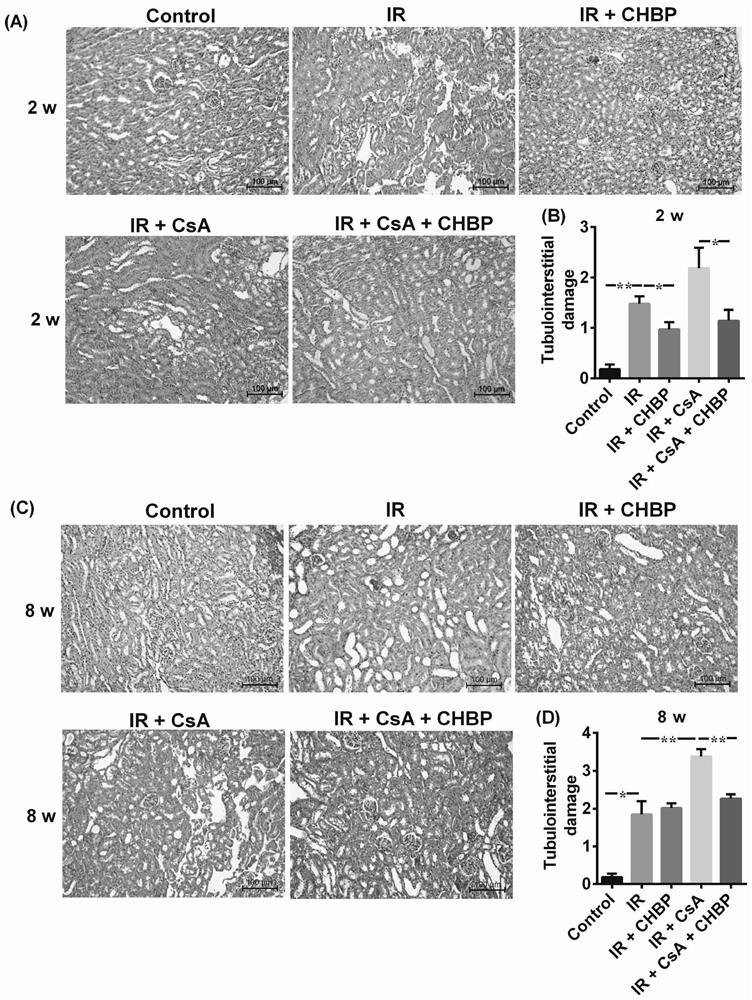Application of cyclic erythropoietin-derived peptide in protection of renal injury and cyclosporine A injury
A technology of erythropoietin and derivative peptides, which is applied in the field of medicine and can solve problems such as short half-life
- Summary
- Abstract
- Description
- Claims
- Application Information
AI Technical Summary
Problems solved by technology
Method used
Image
Examples
Embodiment 1
[0068] The application of a cyclic erythropoietin-derived peptide in the protection of kidney injury and cyclosporine A injury, and the establishment of a mouse kidney injury model: 25-30g male BALB / c mice were randomly divided into 5 groups, 6 in each group Only, that is, n=6, in which the control group: expose the abdominal cavity and renal pedicles, anesthetized with 0.01ml / g of 1% pentobarbital; IR group: separate the two renal pedicles, and clamp them with vascular forceps for 30 minutes Change the color of the kidney, then release the vascular clamp, and reperfuse the blood for 2 or 8 weeks; IR+CsA group: dissolve 2mg CsA in 1ml olive oil, and give IR mice a daily gavage according to the standard of 35mg / kg body weight; IR +CHBP group: dissolve 0.11mg of CHBP in 32ml of 0.9% saline, and inject intraperitoneally to IR mice according to the standard of 24nmol / kg body weight, once every 3 days; IR+CsA +CHBP group: dissolve 2mg of CsA in 1ml of olive oil According to the sta...
Embodiment 2
[0074] Histological assessment:
[0075] Paraffin-embedded sections of kidney samples, sections stained with hematoxylin and eosin (H&E), semi-quantitative assessment of the degree of tubulointerstitial damage (TID) is scored from 0 to 4 points: 0 points if the percentage of damaged area is less than 5% 1 point for 5%-25%; 2 points for 25%-50%; 3 points for 50%-75%; 4 points for more than 75%; Evaluation parameters include tubular dilation and vacuoles in renal tubular lumen , Interstitial dilatation ie edema or fibrosis, inflammatory cell infiltration, protein casts, intraluminal cells or cell debris; 12 cortical fields were randomly selected for each section under 200x magnification for scoring.
[0076] Such as figure 2 As shown in A-D, semi-quantitative analysis of TID was carried out in H&E stained sections. The TID score of the IR group was significantly higher than that of the control group at the 2nd and 8th weeks. At the 8th week, the CsA was further increased compa...
Embodiment 3
[0080] In situ end labeling of apoptotic cells:
[0081] Sections were in situ labeled with fragmented DNA (ISEL) with terminal deoxynucleotidyl transferase (TdT) using the ApopTag peroxidase kit, and the sections were digested with 40 μg / mL proteinase K for 15 min at 37 °C and then incubated at 37 °C Incubate with TdT and digoxigenin-dUTP for 60 minutes. After adding digoxigenin-peroxidase complex for 30 minutes, slices were treated with 3′-amino-9-ethylcarbazole ( AEC) substrate development, select 20 fields of view in the 200x field of view to detect apoptotic cells in tubules, lumens and interstitial areas.
[0082] Such as Figure 4 As shown in A-C, the apoptotic cells detected by ISEL are mainly located in the renal tubule and interstitial area, some cells have multi-morphic nuclei, and few apoptotic cells are found in the glomerular area, and the apoptotic cells from the tubular area, interstitial area and lumen In terms of the total number of cells, IR can significan...
PUM
 Login to View More
Login to View More Abstract
Description
Claims
Application Information
 Login to View More
Login to View More - R&D
- Intellectual Property
- Life Sciences
- Materials
- Tech Scout
- Unparalleled Data Quality
- Higher Quality Content
- 60% Fewer Hallucinations
Browse by: Latest US Patents, China's latest patents, Technical Efficacy Thesaurus, Application Domain, Technology Topic, Popular Technical Reports.
© 2025 PatSnap. All rights reserved.Legal|Privacy policy|Modern Slavery Act Transparency Statement|Sitemap|About US| Contact US: help@patsnap.com



